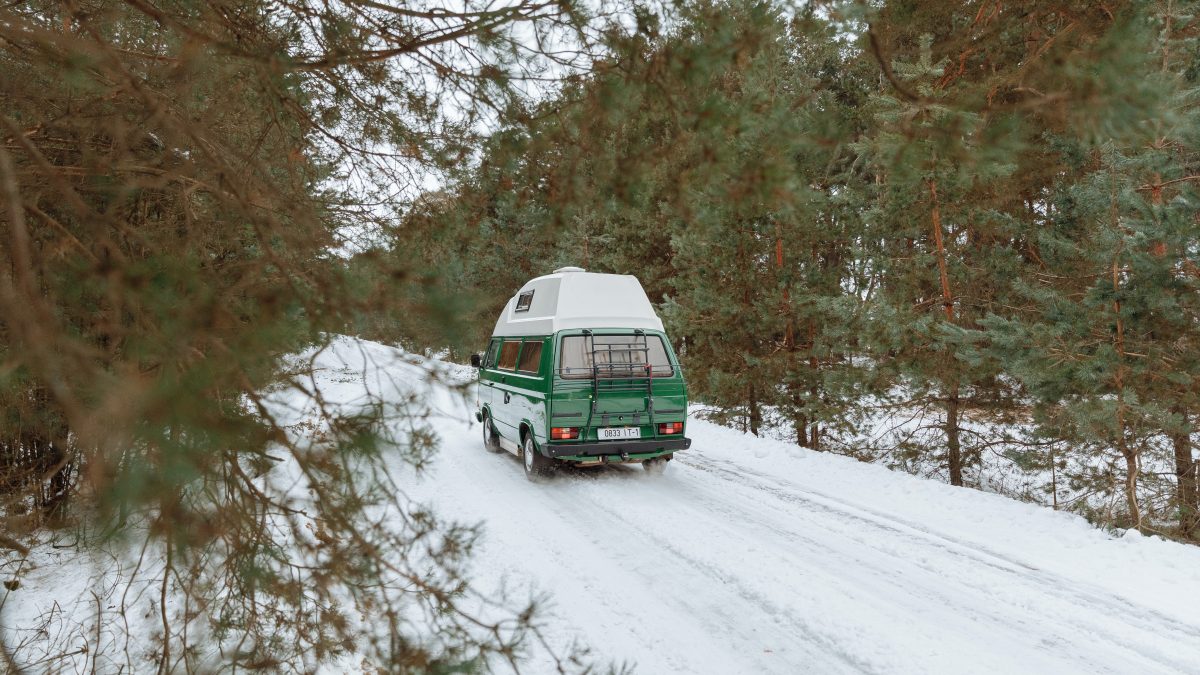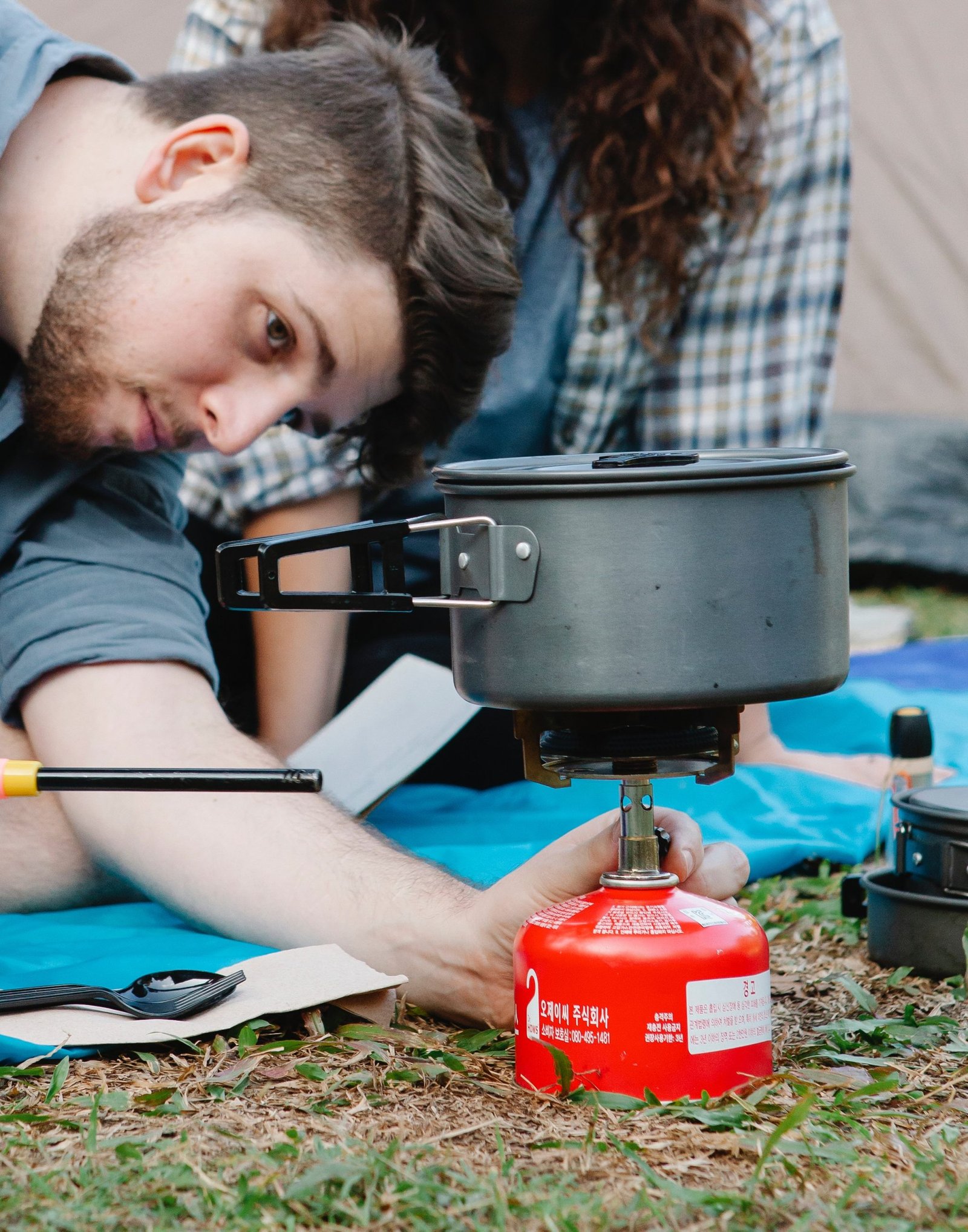
A Complete Guide to Camper Van Cooking
February 24, 2023
10 Best Professional Campervan Conversion Companies
March 28, 2023The Best Campervan Insulation Guide
One of the most important parts of a campervan conversion is making sure you properly insulate it.
Nobody wants to spend nights freezing, or waste huge sums of fuel on constantly heating the camper to keep it comfortable. Nor do you want a van that overheats the second you take it somewhere warm. So, making sure the camper is properly insulated is crucial.
In this guide we’ll cover everything you need to know about choosing the best insulation materials, the costs, and the steps to installing it.


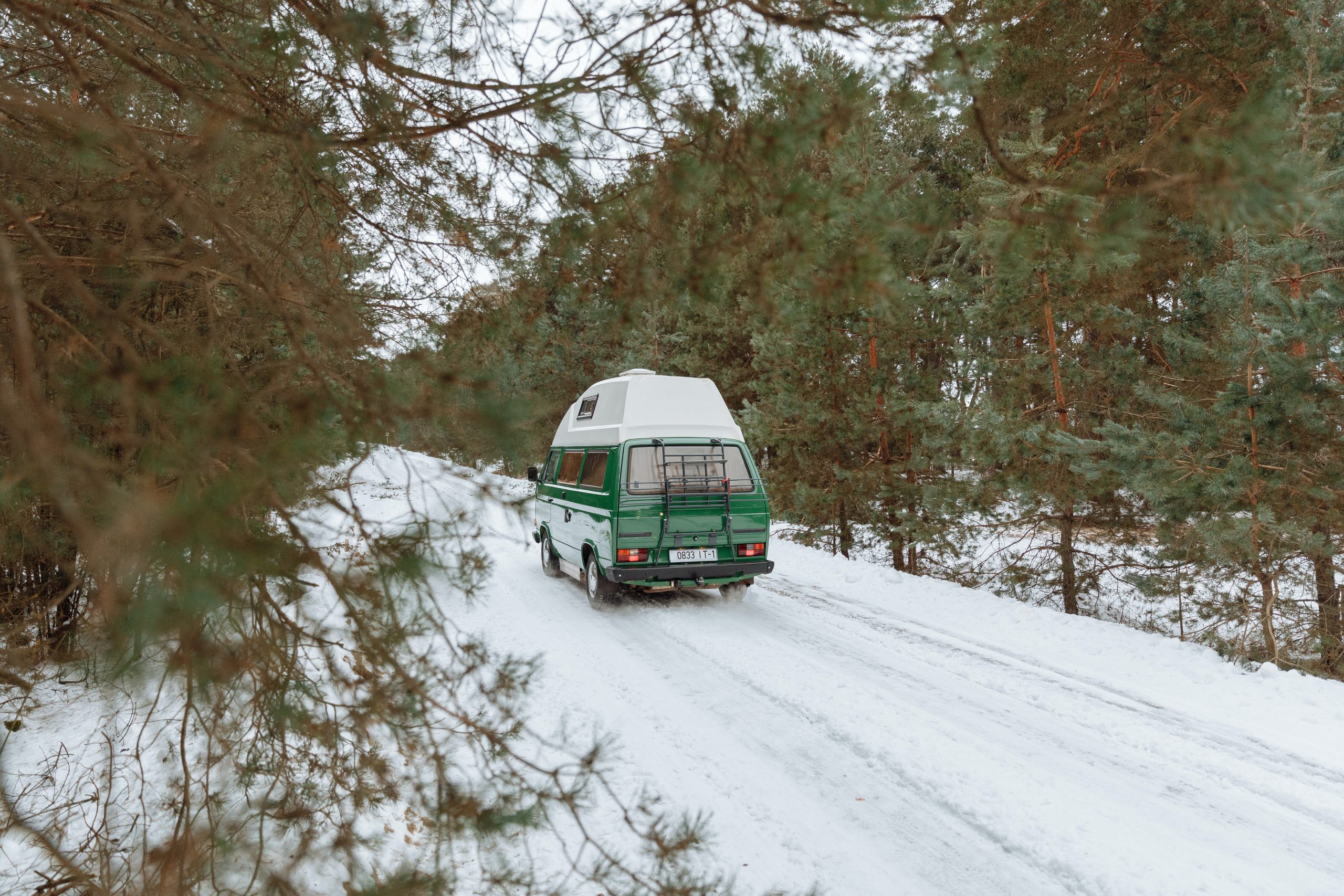
Why Do You Need Insulation?
If you’re planning your own campervan conversion, it can be easy to forget about insulation. It’s not something you’ll see when you look for inspiring conversion ideas, and you’ll likely be more pre-occupied trying to work out the balance between storage space and a beautiful finish.
But it’s crucial. If you try to camp in an uninsulated metal box, you are going to seriously feel the cold. And yes, heaters are a part of many camper conversions, but you won’t want to pay to run them constantly. You’ll also burn them out quickly too.
Insulation is a cost-effective way of retaining heat, so that you can sleep comfortably at night. And since it’s the UK, you’ll probably need it during the day on some of your camping trips too.
What is the Best Insulation for Campervan Conversions in the UK?
The best insulation for your campervan will depend on your budget, how big the campervan is, and how often you plan to travel to colder campsites.
But you also need to factor in how good it is at providing insulation, how easy it is to work with, and whether or not it’s resistant to moisture and mould.
There are four main types of insulation you could go for – here’s a comparison:
Insulation Type | Insulation effectiveness (R-Value) | Suitable For | Cost |
Reflective Foil | N/A | Windows | £ |
Foam Board | 2.7 to 4.2 | Walls, ceiling, floor | £ - ££ |
Spray Foam | 4 | Walls, ceiling, gaps | £££ |
Wool | 2.6 to 2.9 | Walls, door panels | £ - ££ |
Reflective Foil
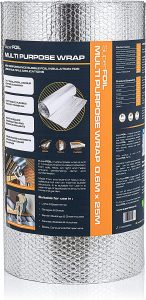
Reflective foil is a thin material that contains air bubbles. It’s a cheap insulation option but is ineffective when used on walls, ceilings or floors because for it to work, you need an air gap. As soon as you stick it onto the wall, it won’t properly work.
Instead, it’s a good option as temporary insulation as window covers. Place it on the windows at night to prevent heat from escaping through the glass.
Image source: Amazon
Foam Board

Foam board is one of the best all-round options for campervan insulation, but only if you use the right type of board.
Avoid cheap EPS board – it’s more likely to degrade over time and the problem will be made worse by the vibrations of the van as you’re driving. PIR foam is probably the best choice although if you can only get hold of XPS board then it will do almost as good a job.
Board is best used for the walls and ceilings of your campervan, but it often isn’t suitable for door panels that may be odd shapes or that need to move. It’s the best choice for your campervan floor insulation though – it’s the most suitable to withstand the weight of your furniture, seats and ultimately you once you have the flooring on top of it.
Image source: Amazon
Spray Foam
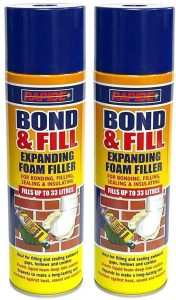
Spray foam has one of the best R-values, which determines how effective it is as an insulator. Closed-cell expanding foam is probably the best campervan insulation you could buy – but you’ll pay a hefty price tag for it.
And the benefits you gain over using foam board aren’t worth the extra expense. Consider using spray foam for gaps, but unless you’ve got a massive budget to spend it’s overkill to use it throughout your campervan.
Image source: Amazon
Wool
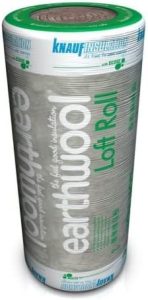
Wool is a more flexible option for insulation that works really well for door panels. It can also be used for walls and the ceiling but it’s not as effective as foam board.
If you’re going to use wool, don’t use fiberglass. It’s cheap, yes, but also toxic and hard to work with – you’d need to use PPE and be very careful when cutting it.
Sheep wool is the best option – not too expensive, a good insulator, non-toxic and it’s naturally resistant to moisture and mould growth. Plus, it’s a great sound insulator, which means your conversations are kept within the van when you’re parked near other campervans on a trip.
But because it’s not as effective as foam board, to use it on walls it’d need to be thicker, so you’re sacrificing more space inside the campervan.
Image source: Amazon
For self built conversions, our self build campervan insurance page helps you to ensure you have the right coverage for all your custom modifications and additions.
Beware “Campervan Specific Insulation”
It’s important to be on the look out for poor-quality insulation that is sold as being suitable for campervans. Often it’s just cheap wool that, while it will work, won’t be the most effective option, and you can overpay just because you’re paying for something ‘ready to use’.
Finding any of the materials we recommend is relatively easy so don’t just look for ready-made campervan insulation because you think that’s the simplest solution. Buying the raw materials either for yourself or to give to a professional will be a better investment in the long term.
Or if you do go for professional insulation, it’s likely the company will provide it for you. Be sure to talk to them about the materials they’re using, and challenge them if they sound like they’re trying to offload something cheap on you.
How Much Does it Cost to Insulate a Campervan in the UK?
 Image source: TwoWanderingSoles
Image source: TwoWanderingSoles
The cost to insulate your campervan will vary depending on what type of insulation you go for and, of course, how big the campervan is.
Plus it depends on whether you source the materials yourself (cheaper), you buy a campervan insulation kit, or you pay for professional campervan insulation in the UK (the most expensive option).
As a rough guide, expect to pay in the region of:
- Reflective bubble foil - £20 to £25 per square metre
- Foam board - £15 to £20 per square metre
- Spray foam - £25 to £35 per square metre
- Wool - £5 to £15 per square metre
If you’re confident in your own DIY skills then you can just buy your own foam board or campervan insulation roll and install it yourself. But if you’re not confident, you may want to pay a professional to help you, so that you can be sure the job is done properly.
How to Insulate a Campervan
For campervan roof insulation, the job is pretty much the same, except you need to make sure you add a thicker layer. That’s because heat rises and so more heat will escape from the ceiling.
However, if you plan on travelling to warmer climates or you’re concerned about using your campervan in hot weather, you may also want to install a ventilation fan in the ceiling. This can then be used when it’s too warm to draw the heat out from the roof, so that you aren’t roasting inside.
For campervan window insulation, you just need to buy sturdy window covers that are removable. You obviously don’t want a permanent installation since you need to be able to actually see where you’re going when you’re driving!
Choose the Best Campervan Insulation for Your Van
There’s no one-size-fits-all approach to campervan insulation because it depends on how much you want to spend, who you want to install it for you, and how much heat you’re hoping to retain.
It’s definitely best to avoid going for the cheapest options though, because over time it won’t be as effective, meaning more money spent heating the van in the first place. It can also degrade faster, and having to take out the panels and flooring to re-do your camper insulation is a real pain.


